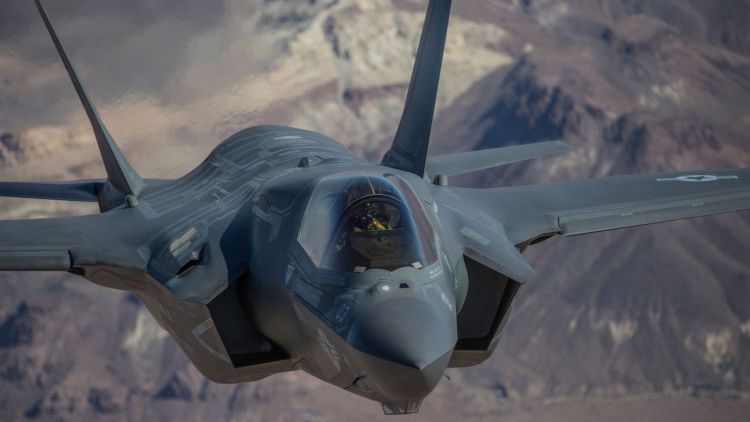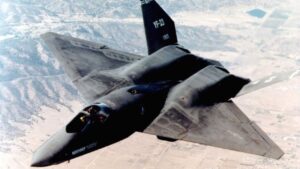On October 31, the US Marine Corps announced that it recently completed an investigation into a highly unusual F-35B Lightning II crash in South Carolina.
The aircraft mishap sent the $100 million jet flying unmanned for over 11 minutes after the pilot, Col. Charles “Tre” Del Pizzo, ejected during a severe rainstorm.
The incident is a striking example of the challenges pilots face with both weather and technology, even with one of the world’s most advanced fighter jets.
Here’s a look at the findings, what led to the ejection, and the role of the F-35’s advanced systems in the aircraft’s unmanned journey.
What Happened That Day?
On September 17, 2023, Col. Del Pizzo took off from Marine Corps Air Station Beaufort, South Carolina, for what was supposed to be a routine training flight.
The weather wasn’t ideal, with heavy rain and limited visibility adding layers of difficulty. Things took a turn when Del Pizzo tried to land the jet near Joint Base Charleston, struggling with severe electrical malfunctions that knocked out both primary radios, his navigation, and the instrument landing system.
To make matters worse, his helmet displays, essential for providing visual flight information, went dark not once, but three separate times during the flight.
Del Pizzo found himself in what pilots call “spatial disorientation“—essentially losing his sense of direction due to a lack of visual references in the stormy weather.
On October 31, the US Marine Corps announced that it recently completed an investigation into a highly unusual F-35B Lightning II crash in South Carolina.
The aircraft mishap sent the $100 million jet flying unmanned for over 11 minutes after the pilot, Col. Charles “Tre” Del Pizzo, ejected during a severe rainstorm.
The incident is a striking example of the challenges pilots face with both weather and technology, even with one of the world’s most advanced fighter jets.
Here’s a look at the findings, what led to the ejection, and the role of the F-35’s advanced systems in the aircraft’s unmanned journey.
What Happened That Day?
On September 17, 2023, Col. Del Pizzo took off from Marine Corps Air Station Beaufort, South Carolina, for what was supposed to be a routine training flight.
The weather wasn’t ideal, with heavy rain and limited visibility adding layers of difficulty. Things took a turn when Del Pizzo tried to land the jet near Joint Base Charleston, struggling with severe electrical malfunctions that knocked out both primary radios, his navigation, and the instrument landing system.
To make matters worse, his helmet displays, essential for providing visual flight information, went dark not once, but three separate times during the flight.
Del Pizzo found himself in what pilots call “spatial disorientation“—essentially losing his sense of direction due to a lack of visual references in the stormy weather.
Disoriented and unable to tell which instruments he could trust, he decided to eject from the aircraft.
The F-35B continued flying on its own for another 64 nautical miles (74 miles), thanks to its advanced autopilot and stability systems, eventually crashing in a rural area in Williamsburg County. Thankfully, no one was hurt on the ground, though there was some damage to forested land and crops.

After the crash, military teams, including personnel from Marine Corps Air Station Beaufort, Joint Base Charleston, and the 2nd Marine Aircraft Wing, worked quickly on recovery and environmental cleanup.
The goal was to ensure that the area was safe, with all contaminants removed and the impacted land prepared for natural growth. This involved clearing out damaged crops, underbrush, and trees, and removing the wreckage to limit any long-term environmental damage.
The Investigation Findings: What Went Wrong?
The Marine Corps investigation concluded that the mishap was ultimately due to pilot error, with Del Pizzo misinterpreting the situation as an out-of-control emergency.
While the aircraft was flyable, the report acknowledged the immense challenge he faced in making decisions under severe weather conditions and technological malfunctions.
“The pilot incorrectly diagnosed an out-of-controlled flight emergency and ejected from a flyable aircraft, albeit during a heavy rainstorm compounded with aircraft electrical and display malfunctions,” the service reported.
The investigation highlighted that the electrical malfunction was unrelated to maintenance or previous repairs.
Everything on the aircraft had been maintained to standards, and the flight was meticulously planned and professionally conducted. This was simply a situation where technology, nature, and human limits collided in the worst possible way.
Why the Jet Continued Flying
One of the more dramatic details of this incident was how the F-35B kept flying on its own for over 11 minutes.
This is no ordinary jet—it’s equipped with sophisticated automatic flight control systems that can keep the plane stable, even when it’s left unmanned.
But there was an additional challenge: once the transponder failed, the jet disappeared from radar, making it impossible to track.
Combined with the jet’s low-observable, “stealth” technology, this created a temporary mystery about its location until the wreckage was discovered nearly a day later.
“The crash site was located at approximately 4:45 p.m., Sept. 18, 2023 […] Recovery and cleanup efforts began Sept. 19, 2023,” the US Marine Corps report noted.
A Challenge That Pilots Face: Spatial Disorientation
The issue of spatial disorientation—a disorienting, often dangerous phenomenon pilots face when their sense of direction goes haywire—is a central piece of this story.
As any aviator will tell you, the experience is disorienting and terrifying. You can’t see the horizon, you lose your sense of up and down, and your own internal balance starts to betray you.
Aviation experts note that while instruments are a pilot’s best friend in these situations, the struggle is convincing your brain to trust them.
John Nance, a former Air Force lieutenant colonel, explains that disorientation can easily lead to incorrect decisions under the stress of bad weather or equipment failure, cited by Military.com in an interview.
Retired Marine Col. J.F. Joseph also emphasized that encountering disorientation doesn’t make someone a poor pilot; it’s a hazard that most pilots experience at some point in their careers.
The Aftermath for Col. Del Pizzo
Despite the findings, Col. Del Pizzo wasn’t grounded.

A review board found that his decision to eject, while ultimately deemed unnecessary, was justified under the challenging circumstances.
Del Pizzo later returned to active flight status and was even selected to lead Marine Operational Test and Evaluation Squadron One (VMX-1) in Arizona. However, only a few months into his command, he was relieved of duty—a decision that surprised many, including his family, who had uprooted for the new assignment.
According to Military.com, the commandant’s decision to relieve Del Pizzo came after a full review of the mishap, though it wasn’t tied to any punitive action, as the report didn’t find any negligence on his part.
To it wrap up, this investigation sheds light on just how complex flying advanced jets like the F-35B can be. Even with top-tier technology and the best training, there are situations where pilots are up against immense challenges.



